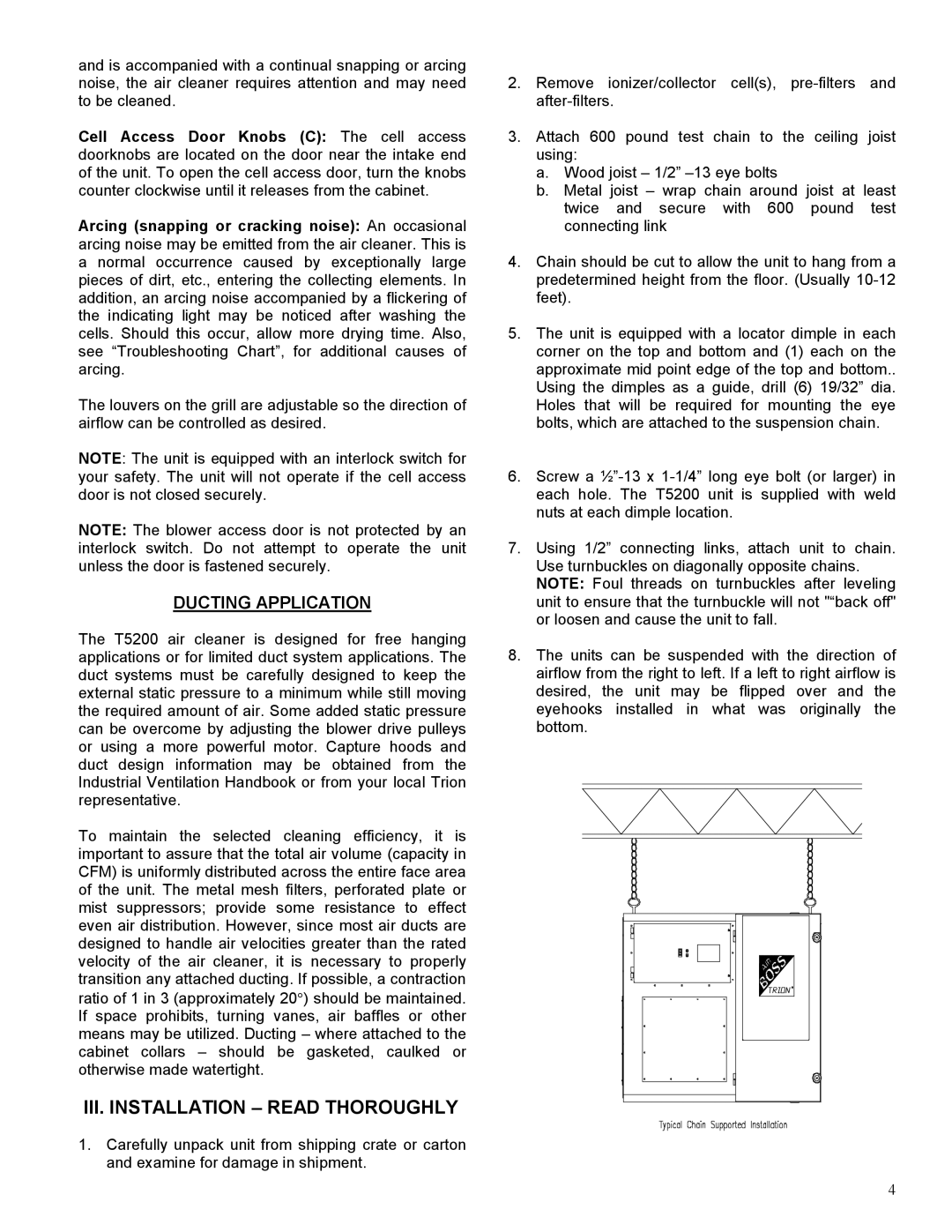T5200 specifications
The Trion T5200 is an advanced piece of technology designed for high-performance computing tasks, meeting the demanding needs of various industries. This cutting-edge server system is tailored for businesses that require robust capabilities in data processing, storage, and network management.One of the standout features of the Trion T5200 is its powerful processor options. It is equipped with the latest multi-core processors, providing exceptional processing power that enables simultaneous multitasking. This feature is crucial for applications that demand heavy computational resources, such as machine learning, data analytics, and real-time transaction processing.
In terms of memory, the Trion T5200 supports high-capacity RAM configurations, allowing for enhanced performance during intensive workloads. The system can handle substantial memory demands, ensuring that large datasets can be processed efficiently without bottlenecks. The expandable memory architecture also enables organizations to upgrade their systems as their needs grow.
Storage is another critical aspect of the Trion T5200. The system is equipped with a flexible storage architecture that supports various configurations of SSDs and HDDs. Users can opt for high-speed SSDs to ensure rapid data access and reduced latency or traditional HDDs for larger capacity requirements. The combination of high-performance storage options makes the T5200 ideal for both transactional and analytical workloads.
Networking capabilities are also a highlight of the Trion T5200. It provides multiple high-speed networking interfaces, including support for 10GbE and higher options, which facilitate fast data transfer and robust connectivity. This feature is essential for businesses that rely on cloud computing, virtualization, and expansive data center operations.
The Trion T5200 is designed with energy efficiency in mind. It incorporates advanced power management technologies that reduce energy consumption without compromising performance. This feature not only leads to cost savings but also aligns with the growing emphasis on sustainability in IT infrastructures.
In addition to hardware performance, the Trion T5200 supports advanced security features to protect sensitive data and ensure compliance with industry standards. This includes hardware-based security elements and robust software solutions designed to safeguard against evolving cyber threats.
Overall, the Trion T5200 stands out as a versatile and powerful server system that is built for the future. Its combination of high performance, scalability, and innovative technologies positions it as an ideal choice for organizations looking to enhance their computing capabilities and meet today’s challenges in the digital landscape.

